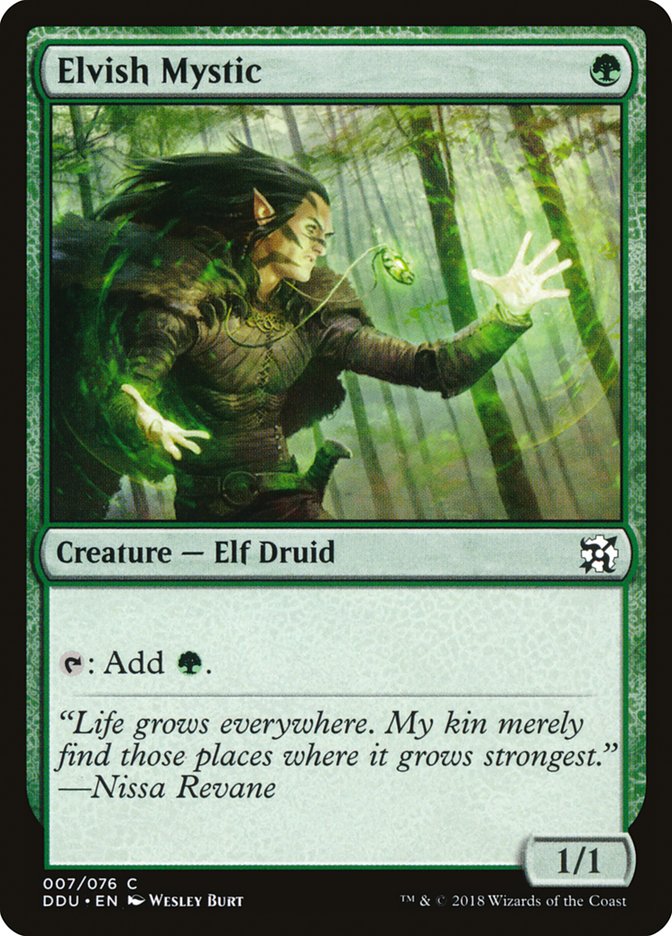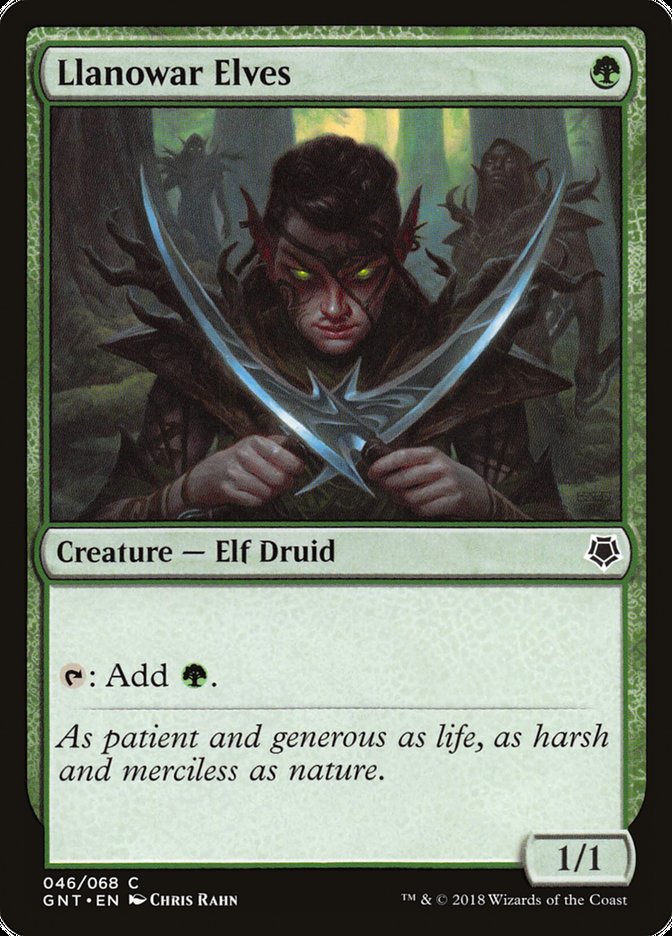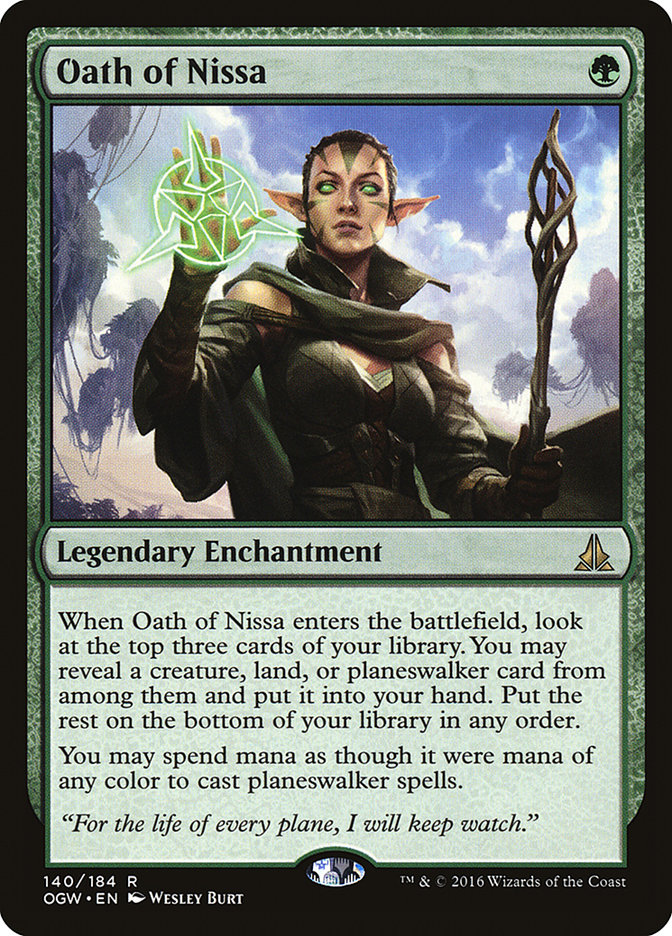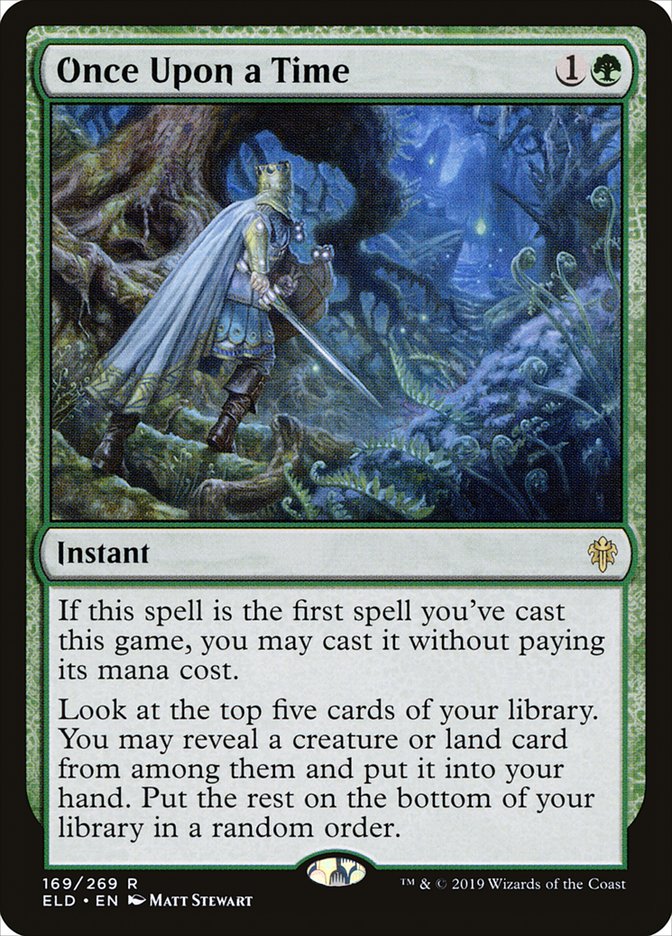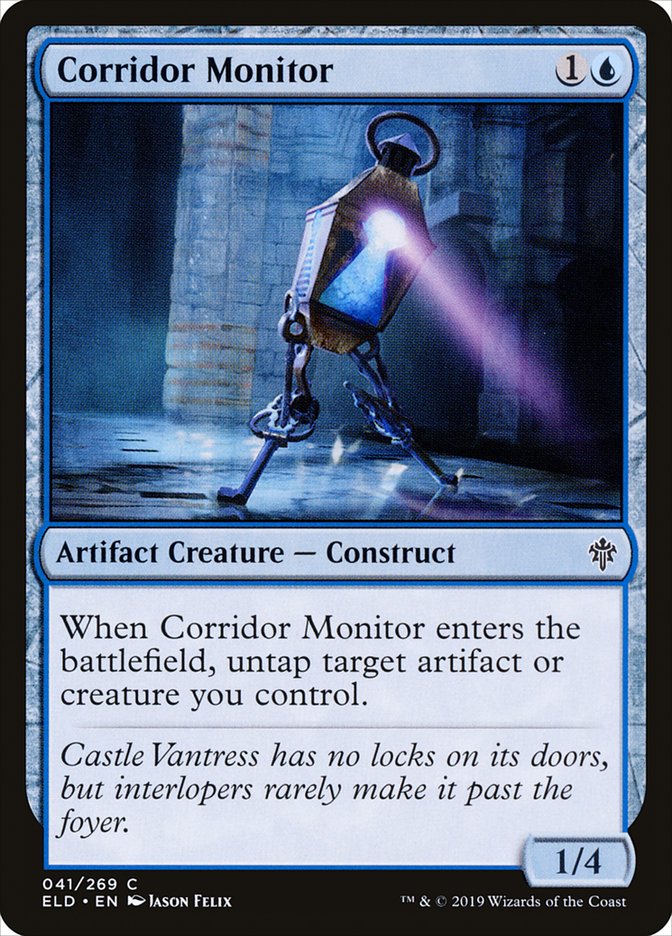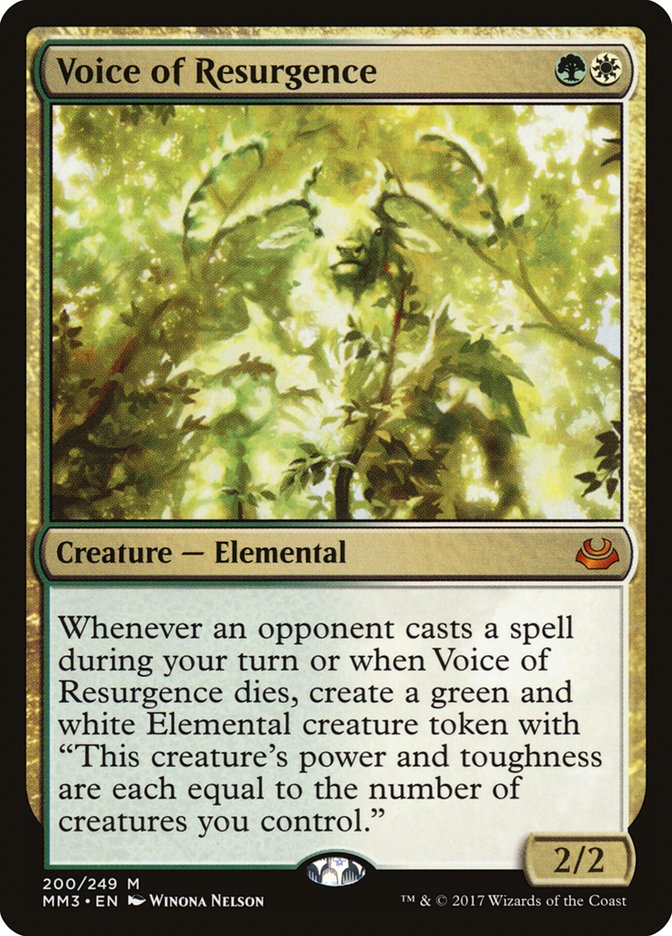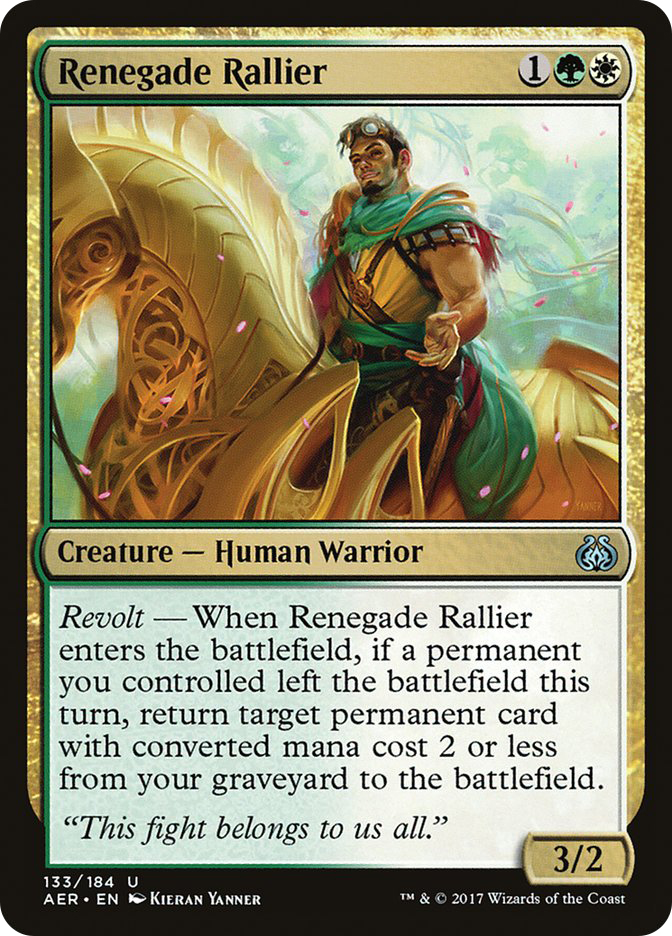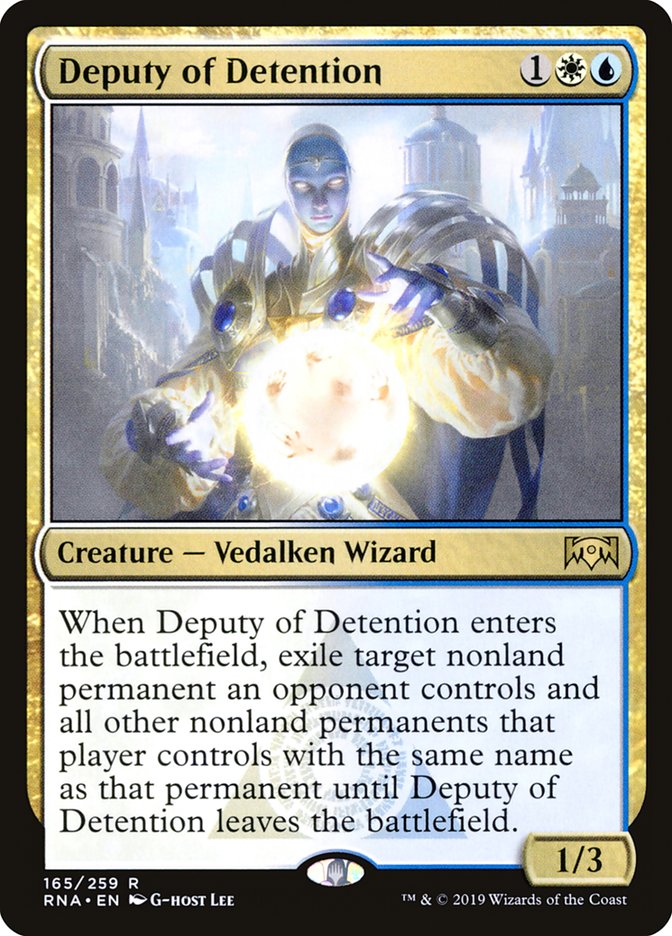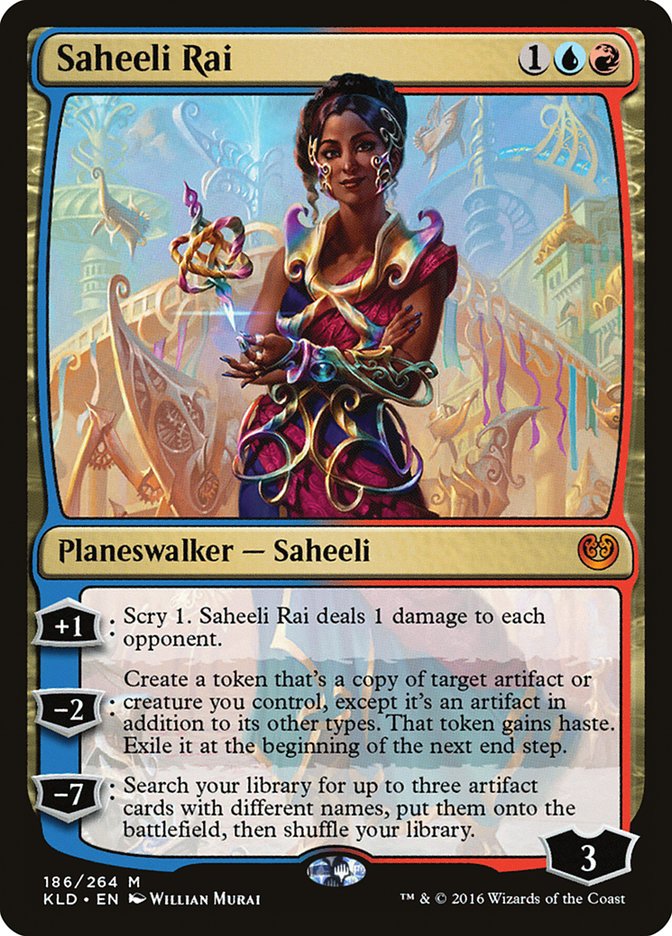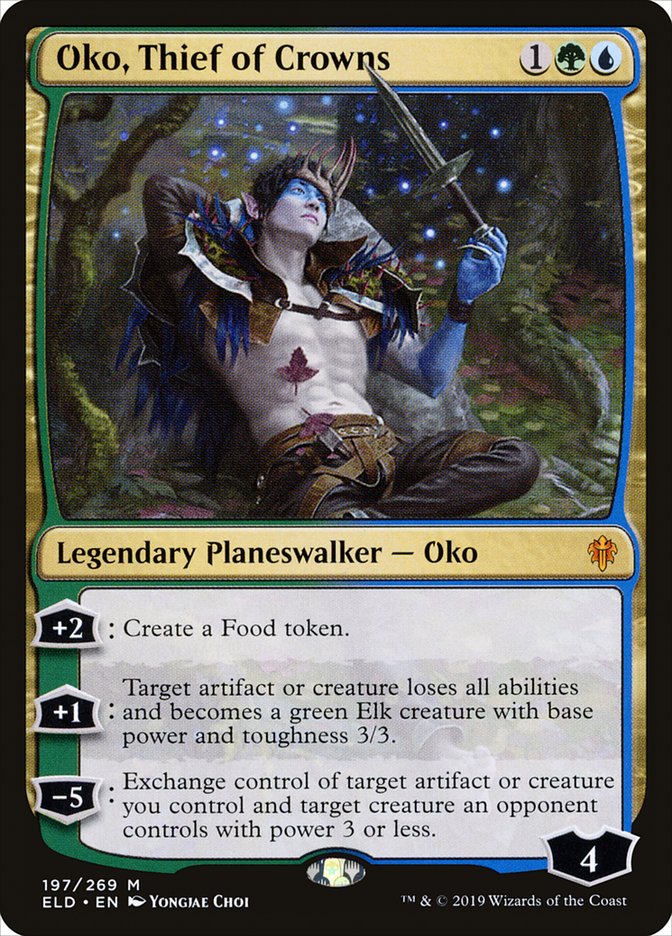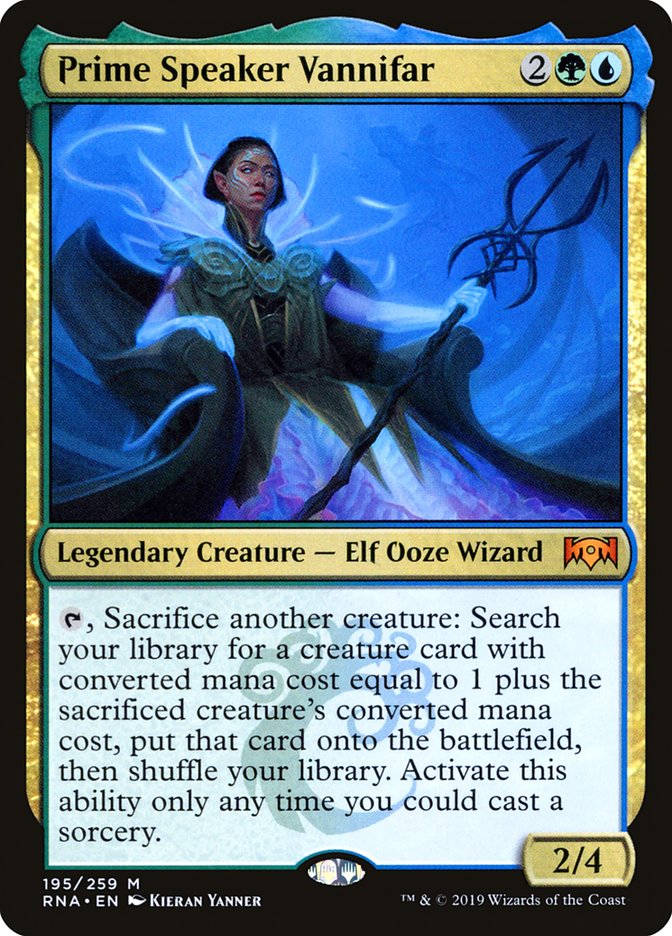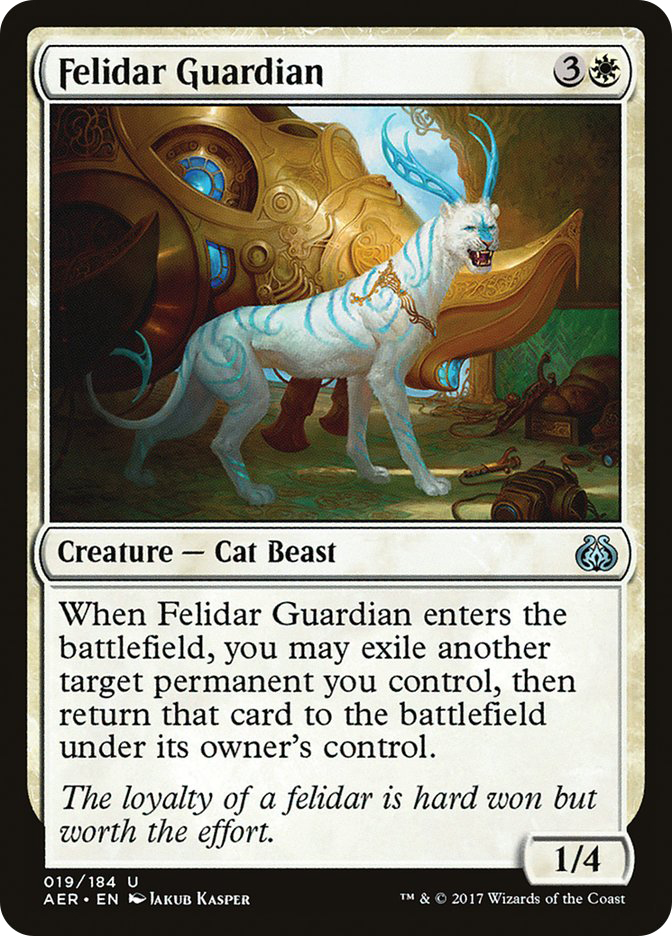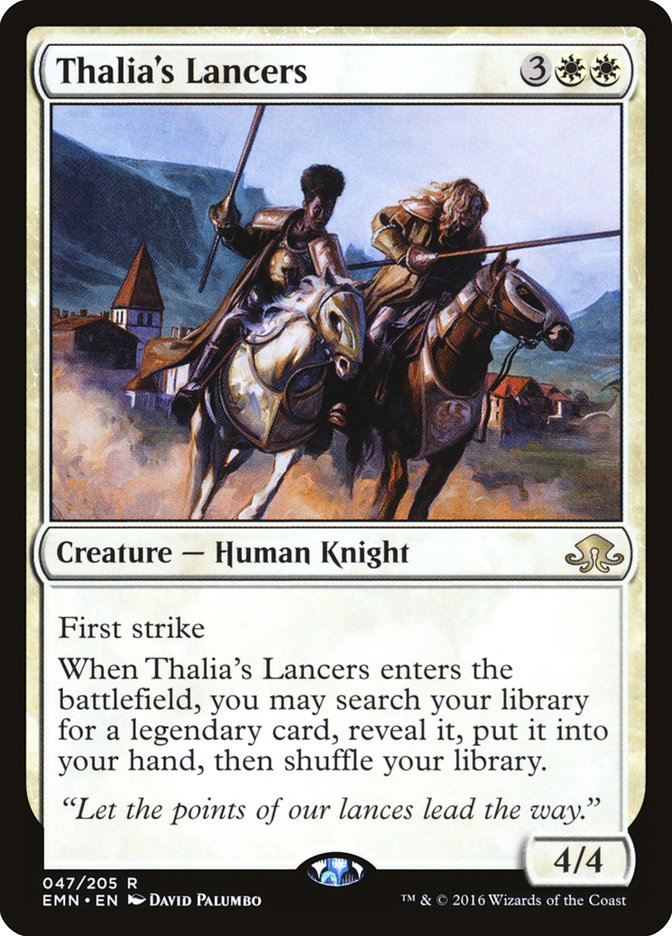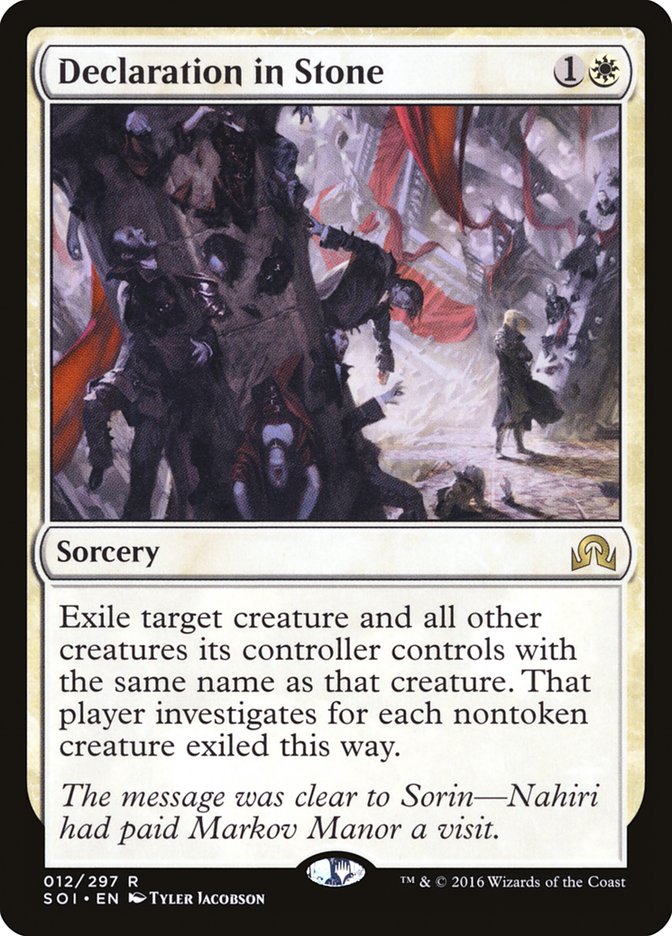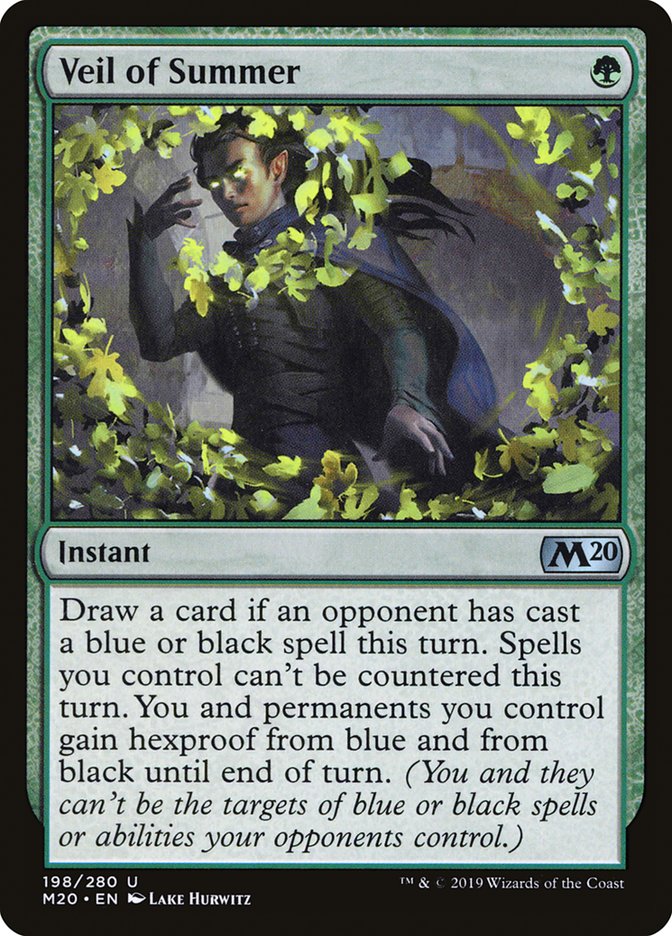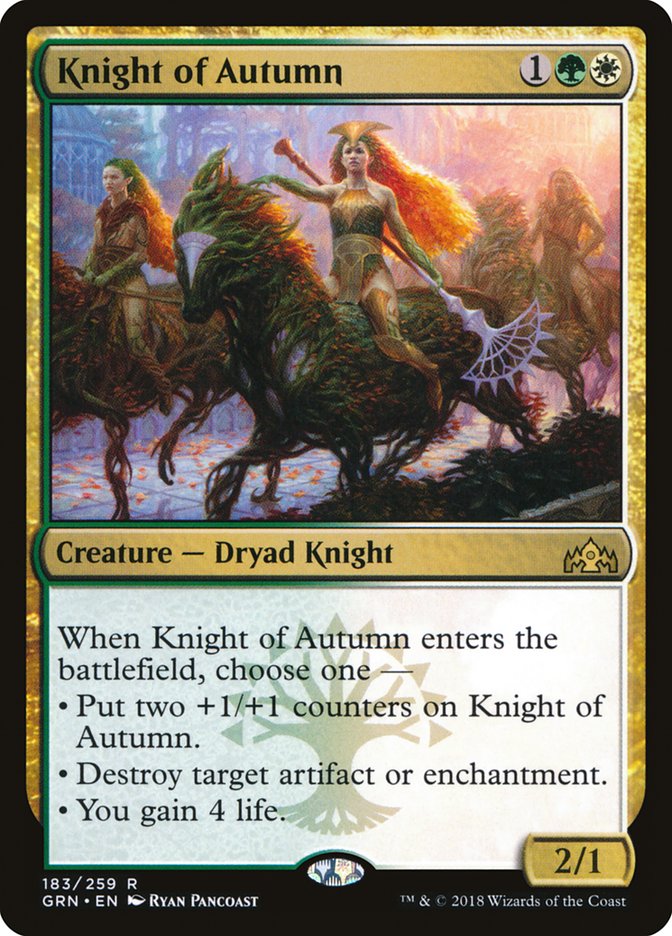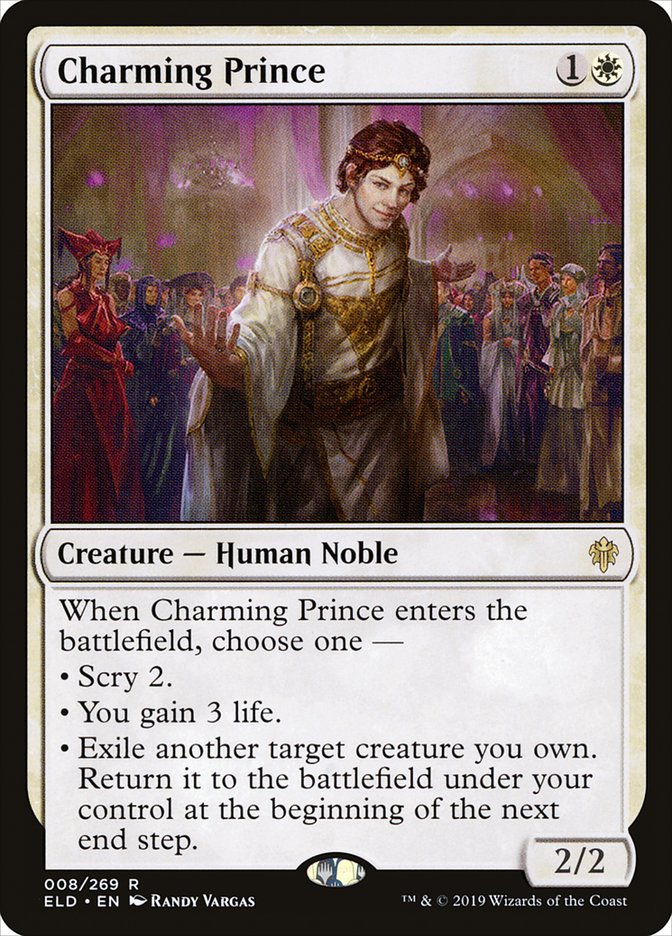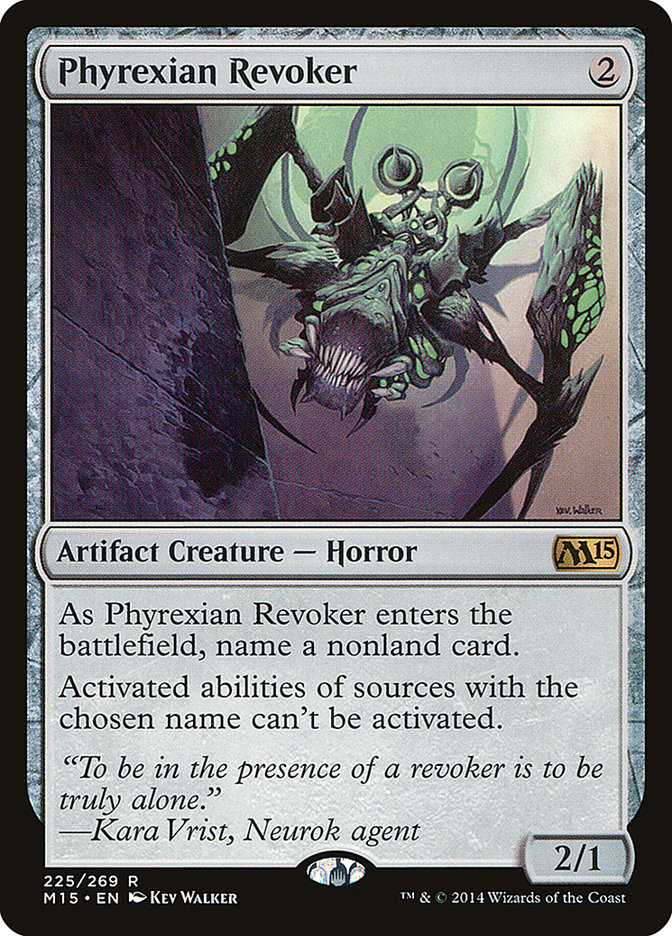The first deluge of Pioneer decklists from Magic Online was released recently and the most intriguing one by far was based around Prime Speaker Vannifar piloted by yoman5, a regular in the GAM Podcast Discord and a rising star as far as innovation in Constructed is concerned.
Creatures (22)
- 3 Llanowar Elves
- 1 Voice of Resurgence
- 3 Elvish Mystic
- 1 Reflector Mage
- 1 Thalia's Lancers
- 2 Renegade Rallier
- 4 Felidar Guardian
- 1 Deputy of Detention
- 4 Prime Speaker Vannifar
- 2 Corridor Monitor
Planeswalkers (9)
Lands (22)
Spells (7)

It’s been a while since we’ve seen a deck reminiscent of the old Birthing Pod strategies from years ago. But just like those previously broken decks, yoman5’s Four-Color Vannifar deck can combo off from a single creature and an active Prime Speaker Vannifar. So let’s focus first on the creatures in the list, as they provide the base to create a combo kill at the first opportunity.
One-drop mana accelerators are the backbone to any strategy looking to get on the battlefield early and spend mana in an efficient and proactive way. A three-three split of Elvish Mystic and Llanowar Elves makes a lot of sense because of various hosers like Phyrexian Revoker and Sorcerous Spyglass. The purpose of the one-drop creatures is rather obvious and needs minimal explanation.
Oath of Nissa obviously helps find creatures, planeswalkers, or lands to ensure your battlefield develops as the game goes on. It also provides a fantastic target to blink with Felidar Guardian’s trigger. As was true with Four-Color Copy Cat from the old Standard format, Felidar Guardian blinking Oath of Nissa is one of the strongest plays you can make to generate value and force the opponent to start interacting. The static text on Oath of Nissa is also relevant because it ensures you can cast Saheeli Rai, the only red card in your deck, with ease.
Once Upon a Time provides additional copies of the Oath effect to smooth out your draws. One thing Once Upon a Time can do that Oath of Nissa cannot is find a mana accelerant on Turn 1 for free. It’s worth noting that both Once Upon a Time and Oath of Nissa have added value in sideboard games for two reasons. First, they provide an additional way to locate your one-of creatures beyond Vannifar. It allows you to have more space in your sideboard because the green cantrip-type cards mitigate the variance inherent with having a lot of one-ofs. Second, these cards give you a larger chance of having an answer to one of your opponent’s sideboard cards that shuts off your combo (something we’ll go into depth about later).
These two cards’ importance is less related to being cast on Turn 2 than it is to being available in the deck for a potential combo turn. Additionally, using Vannifar to sacrifice Voice of Resurgence and find a Renegade Rallier to return Voice is a great play in a grindy matchup. It’s unintuitive to play a creature deck with such a dearth of impactful two-mana creatures, but I promise the focal point is having four mana on Turn 3, since activating Vannifar as soon as possible is the goal.
The most important three-drop in the deck, Renegade Rallier is essential to the combo with its revolt clause.
The combo is as follows:
1. With an active Vannifar on the battlefield, sacrifice a one-drop to Vannifar for Corridor Monitor, untapping Vannifar.
2. Sacrifice Corridor Monitor to Vannifar, getting a Renegade Rallier, returning the Corridor Monitor, and untapping Vannifar.
3. Sacrifice Renegade Rallier to Vannifar, getting a Felidar Guardian, blinking Corridor Monitor, and untapping Vannifar.
4. Sacrifice Corridor Monitor to Vannifar, getting a second Renegade Rallier, returning Corridor Monitor, and untapping Vannifar
5. Sacrifice the new Renegade Rallier to Vannifar, getting a second Felidar Guardian.
6. Felidar Guardian once again blinks Corridor Monitor, which once again untaps Vannifar.
7. Sacrifice Felidar Guardian to Vannifar, getting Thalia’s Lancers, which finds Saheeli Rai.
8. Cast Saheeli Rai and copy Felidar Guardian ad nauseam.
This may seem complicated – and it certainly is – but if you understand that the deck can go off with any one- or two-drop creature, three untapped mana (for Saheeli), and an active Vannifar, you’ll be able to know exactly when you can win.
Deputy of Detention and Reflector Mage can deal with problematic permanents and buy you some time. They can also answer powerful sideboard cards from opponents, as you can’t go off through a card like Scavenging Ooze, for example. Your deck does contain a second copy of Corridor Monitor, so if you have to get Reflector Mage with Vannifar and bounce a card like Scavenging Ooze, you still can go off again the following turn.
Other versions of this deck have included a copy of Bounding Krasis, which allows you to Vannifar all the way up to Felidar Guardian without using the graveyard. You can’t get the second part of the chain going like you can with Renegade Rallier on Corridor Monitor, but if graveyard hate becomes popular, this one-of could warrant inclusion.
In addition to several important three-drop creatures, Four-Color Vannifar sports a robust planeswalker suite. Oko, Thief of Crowns seems to dominate every format he touches nowadays and his impact here is more than just an insane rate and a way to gain some life on the cheap. He can turn any problematic creature or artifact into a boring generic 3/3 Elk, a power and toughness that Felidar Guardian can conveniently block all day. With Aetherworks Marvel and a wealth of powerful and interactive creatures in the format, the inclusion of Oko is more than warranted.
Saheeli Rai is obviously an integral piece of the combo, but her ability to smooth out your draws and ensure you make land drops is definitely understated. There’s not too much else to say about Saheeli, as her main value lies in being a combo piece, but the next planeswalker in our list has a wealth of value worth discussing.
Teferi, Time Raveler is an unbelievable addition to a combo deck that plays to the battlefield in a proactive way. You can bounce something for a tempo advantage or simply +1 to keep the loyalty high so Teferi protects your combo. Teferi has the added value of being able to bounce problematic permanents that interfere with your ability to go off. An active Deathrite Shaman, for example, can stop the combo chain if used correctly, but Teferi prevents this by bouncing Deathrite and any other problematic creature before you start the chain.
The ability to bounce things is great obviously, but the best ability is the static one by a mile. Your opponent can’t stop you from going off with any spells or flash creatures, and in a format with Abrupt Decay and a wealth of other efficient removal spells, the ability of Teferi to stop any semblance of instant-speed play is very strong.
The most expensive part of the deck is quite possibly the only set of cards as important as the three-drops. Prime Speaker Vannifar is the namesake card of the deck and provides a stream of tutor effects to answer almost anything the opponent can throw at you while also representing a stark inevitability to end the game in a fantastic combo fashion if left unimpeded. Vannifar is every bit as good as her text box and our ability to choose the right card at the right time.
Felidar Guardian can do a lot besides being an integral combo piece. Blinking a Reflector Mage is a great way to buy yourself a ton of time and blinking Oath of Nissa can generate value and ensure you can keep pace with attrition-based decks, of which there are a lot in the early stages of Pioneer. You can also reset Teferi or Oko so that you can use them again for their minus abilities.
In a game where you’re not explicitly going for the combo, you can even blink Thalia’s Lancers and get a planeswalker to keep the value train rolling. Lancers itself is a seemingly innocuous one-of, but it provides the ability to complete the combo and thus is very important. Tutoring a Teferi or an Oko for value is something I alluded to before that has merit as well.
Sideboarding
An actual sideboard guide seems strange, since there’s really no established Pioneer metagame, but I can allude to the purposes of each card in a general sense.
Unfortunately, you can’t sideboard this in to hose other Vannifar decks because it stops you as well. Rest in Peace is a great bullet against all the Haunted Dead-based Emerge decks, of which there are a few. It also hoses Jace, Vryn’s Prodigy and Kolaghan’s Command, two cards poised to be staples in Pioneer.
Emrakul, the Promised End promises to be a huge problem in this relatively unexplored format. Declaration in Stone can answer the 13/13 monster while also being able to serve as a clear-cut solution to a wealth of problematic creatures. Since you’re seeking to end the game in one vital turn, you’re less concerned about the fact that the opponent can eventually cash the Clue in for a card, and the tax on their mana to recoup the lost value is nonzero.
Veil of Summer is one of the most overpowered color hosers that has been printed in years. Teferi, Time Raveler goes a long way towards ensuring that you can’t profitably sleeve up countersells against Four-Color Vannifar, but Veil of Summer goes the extra mile while also protecting you from Thoughtseize. Thoughtseize is likely to be one of the most format-defining cards and the ability to protect your fragile opening hands is incredibly important.
Wear // Tear is probably the best Disenchant effect in Pioneer. When people are registering a Paradoxical Outcome storm deck, having an answer to their win condition (Aetherflux Reservoir) is important. The ability to kill a Courser of Kruphix is also great, even though it remains to be seen how many decks play Courser as well as other relevant artifacts and enchantments. Simply put, it’s nice to have a catch-all for problematic artifacts and enchantments in a relatively unknown format.
As a longtime player, I feel like the legality of this card is never a bad thing. Spell Pierce can get you back into games that you’re losing by trading favorably on mana and can shut the door in blowout games by protecting a crucial spell or your combo.
A Wear // Tear you can tutor for that also provides a lot of value as a random beater or a way to gain some life against an aggressive deck is a highly warranted inclusion. Knight of Autumn seems like it could be a good maindeck one-of, but I wouldn’t really know what to cut and Deputy is almost certainly more versatile.
These two cards provide a solid shot in the arm for your “fair game.” In games where things die and get countered often, it’s nice to have another two-drop for consistency. Voice provides that while also providing a legitimate threat when you sacrifice it to Vannifar. It also insulates you against counters and makes any interaction the opponent has on your turn come at an appreciable cost.
Tireless Tracker is a great target for a Vannifar activation when you’re attempting to protect yourself from removal on the opponent’s following turn. If they manage to kill your threat, at least you’ve gained a card in the process. It’s also nice to have something that can kill the opponent if they stumble, especially in sideboard games which are more likely to break down because of narrow cards and the like.
Charming Prince is the definition of utility in a deck that is structured to maximize utility. Mostly, you’ll be using this as an ancillary Felidar Guardian, blinking a value creature for a second chance on the enters-the-battlefield ability. The fact that you can also blink this card with Saheeli Rai or Felidar Guardian to garner the best possible value from it is a total luxury. It’s wild that a card can do so much while not objectively doing all that much, if that makes sense. Your deck is constructed in such a way that a card like this will always be maximized and I really like that about it.
Checks and balances are important. Phyrexian Revoker keeps some of the most powerful things in Pioneer in check, if only for a few turns. It creates a nice dynamic in the mirror or against similar decks because you can keep it on the battlefield to ensure you don’t lose to the combo. Then you can Vannifar your Revoker away and start going off, ideally under the protection of Teferi. A corner-case application of Revoker is that you can stop Walking Ballista, one of the few ways to beat the Copy Cat combo through Teferi.
With the Pioneer format becoming a focal point of the Season Two Invitational at SCG CON Winter, l cannot stress how excited I am to prepare for this important event. I’ve always enjoyed pursuing the best strategies in new, unbroken formats and I can’t wait to see what everyone comes up with!


